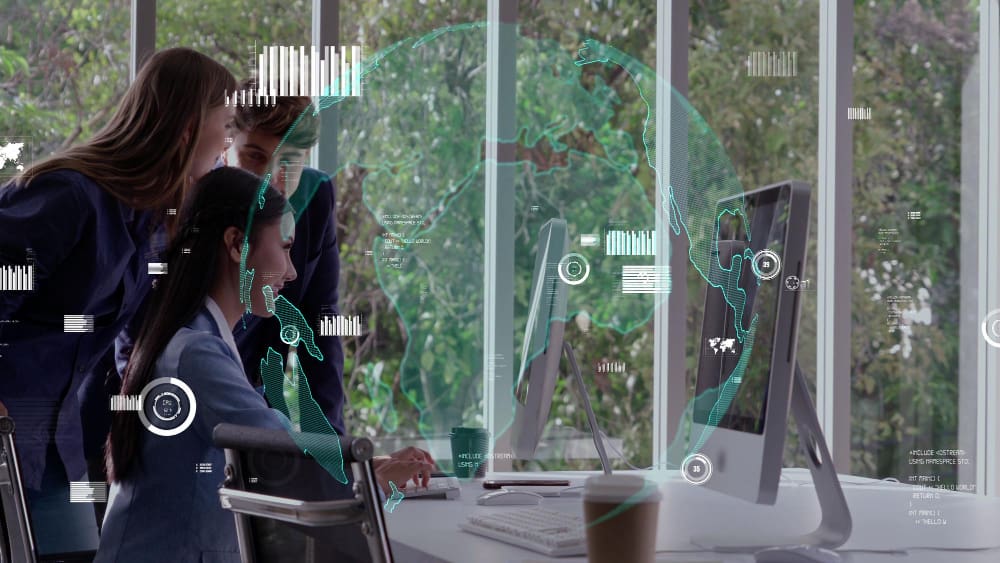In offices and remote workspaces across the globe, professionals are using a new generation of Artificial Intelligence to solve one of business’s oldest problems: information overload. Powered by sophisticated Large Language Models (LLMs), AI summarization tools are now being deployed to distill hours-long meetings and dense, multi-page reports into concise, actionable insights in mere seconds. This technological shift, happening now across every industry from finance to healthcare, is fundamentally changing how companies manage knowledge, enabling teams to save thousands of hours, make faster decisions, and ensure critical information is never lost in the noise.
The End of Information Overload
The modern workplace is drowning in data. A constant stream of lengthy email threads, detailed project reports, financial statements, and back-to-back video conferences creates a significant bottleneck. Professionals often spend more time trying to catch up on information than acting on it.
This is the core problem that AI summarization directly addresses. By leveraging the power of AI, businesses can automate the laborious task of reading, listening, and synthesizing vast amounts of content. This frees up human capital to focus on higher-value activities like strategy, innovation, and client relationships.
At the heart of this revolution are LLMs, the same technology behind platforms like OpenAI’s ChatGPT and Google’s Gemini. These models have been trained on immense datasets of text and can understand language, context, and nuance with remarkable sophistication. They power two primary types of summarization.
Extractive vs. Abstractive Summarization
The first and simpler method is extractive summarization. This technique works by identifying and pulling the most important sentences or phrases directly from the source text. It’s like using a digital highlighter to pick out the key points and presenting them verbatim. While fast, the results can sometimes feel disjointed or lack flow.
The more advanced method, and the one used by most cutting-edge tools today, is abstractive summarization. This approach involves the AI actually understanding the core concepts of the material and then generating entirely new sentences to describe them. The result is a more natural, coherent, and human-like summary that captures the essence of the original content, much like a skilled human assistant would.
Choosing the Right AI Summarization Tool
Selecting the appropriate tool depends heavily on your specific needs, budget, and security requirements. The market is broadly divided into three categories: general-purpose chatbots, specialized platforms, and integrated ecosystem solutions.
General-Purpose LLMs (The DIY Approach)
Platforms like ChatGPT, Anthropic’s Claude, and Google Gemini are incredibly versatile. You can simply copy and paste text from a report or a meeting transcript and ask for a summary. Their primary advantage is accessibility and low cost, with powerful free tiers available.
However, this approach has drawbacks. The biggest concern is data privacy; you should never upload sensitive, confidential, or proprietary company information to these public models unless you are using their enterprise-grade, privacy-focused tiers. Furthermore, achieving a perfect summary often requires skillful “prompt engineering”—crafting a precise request that specifies the desired length, format (e.g., bullet points, paragraph), and target audience for the summary.
Specialized SaaS Platforms (The Purpose-Built Solution)
A growing number of companies offer Software-as-a-Service (SaaS) platforms built specifically for summarization. Tools like Otter.ai and Fireflies.ai are leaders in the meeting space, while others like QuillBot and SMMRY focus on text documents.
These platforms offer significant advantages over general-purpose models. For meetings, they integrate directly with your calendar and video conferencing apps (Zoom, Microsoft Teams, Google Meet), automatically joining, transcribing, and summarizing your calls. They can identify different speakers, highlight action items, and create a searchable archive of all your conversations. Their focus on a specific task often yields more accurate and relevant results with less effort.
Integrated Ecosystem Solutions (The Seamless Experience)
The third category involves AI features built directly into the software you already use. A prime example is Microsoft Copilot, which is embedded within the Microsoft 365 suite. It can summarize a long email thread in Outlook, recap a Teams meeting you missed, or generate an executive summary from a Word document.
Similarly, Zoom has its own AI Companion that can provide meeting summaries. The key benefit here is a seamless, integrated workflow without the need to switch between different applications. The main limitation is that you are tied to that specific software ecosystem.
A Practical Guide: Summarizing Reports and Documents
Effectively using AI to summarize a long report is a straightforward process, but it requires human oversight to ensure quality and accuracy.
Step 1: Prepare the Document. Ensure your report is in a clean, machine-readable format like a .txt, .docx, or searchable .pdf file. If you have a scanned document, you may need to use Optical Character Recognition (OCR) software first to convert the image of the text into actual text data.
Step 2: Choose Your Tool and Define the Goal. Based on the sensitivity of the information, select your tool. Before you begin, be clear about what you need. Are you looking for high-level takeaways for an executive? A list of key statistics for a presentation? Or a detailed summary of technical findings?
Step 3: Craft Your Prompt. If using a general-purpose LLM, provide clear instructions. For instance: “Act as a business analyst. Summarize the following financial report into five key bullet points for a non-financial leadership team. Focus on revenue trends, profit margins, and major risks identified.”
Step 4: Review and Refine. This is the most critical step. AI is a powerful assistant, not an infallible oracle. Read the generated summary carefully and compare it against the source document. Check for factual errors, misinterpreted data, or “hallucinations”—instances where the AI invents information. Edit the output for tone, clarity, and accuracy before sharing it.
A Practical Guide: Summarizing Meetings
For meetings, specialized AI notetakers offer the most efficient workflow, transforming spoken conversations into structured, actionable summaries.
Step 1: Configure the AI Notetaker. Integrate a tool like Fireflies.ai or Otter.ai with your work calendar. Grant it permission to access your meetings, and configure it to automatically join your scheduled calls on platforms like Zoom or Teams.
Step 2: Let the AI Work. During the meeting, the AI bot will join as a participant, listen, and generate a real-time transcript. You and other participants can focus entirely on the conversation, knowing that the record-keeping is being handled automatically.
Step 3: Access the Post-Meeting Summary. Shortly after the meeting ends, the platform will email you a link to the recording, the full transcript, and an AI-generated summary. This summary typically includes key topics discussed, major decisions made, and a list of potential action items.
Step 4: Edit and Distribute. Review the AI’s summary. Clean up the list of action items, assign owners, and add any crucial context the AI may have missed. You can then easily share this polished, concise summary with all attendees, ensuring everyone is aligned on the outcomes and next steps.
The Broader Business Impact
The value of AI summarization extends far beyond simply saving time. It creates a ripple effect of efficiency and intelligence throughout an organization.
It accelerates decision-making by providing leaders with the distilled essence of complex information almost instantly. It builds a powerful, searchable knowledge base, allowing new employees to quickly get up to speed on past projects and decisions. Furthermore, by clearly identifying action items from every meeting, it fosters a culture of accountability and follow-through.
Navigating the Risks and Ethical Waters
While transformative, this technology comes with risks that must be managed responsibly. Data security is paramount. Using public, consumer-grade AI tools for sensitive corporate information poses a significant risk of data leaks. Businesses must opt for enterprise-grade solutions that offer robust security protocols and data privacy guarantees.
Accuracy is another major consideration. AI models can misinterpret nuance or hallucinate facts, leading to flawed summaries and poor decisions if not verified. Human oversight is not just recommended; it is essential. The final output should always be checked by a human who understands the context of the material.
Finally, AI struggles to capture the full spectrum of human communication. It may miss sarcasm, irony, non-verbal cues, or the subtle political undercurrents of a high-stakes meeting. The human ability to read the room remains an invaluable skill.
Conclusion
AI-powered summarization is no longer a futuristic promise but a practical, powerful tool available to any business today. It offers a direct solution to the pervasive problem of information overload, transforming daunting reports and lengthy meetings into clear, actionable intelligence. By automating the low-level task of synthesis, it empowers professionals to operate at a more strategic level. The most successful organizations will be those that embrace this technology not as a replacement for human intellect, but as a partner to it, combining the speed and scale of AI with the critical judgment and contextual awareness of their people.








